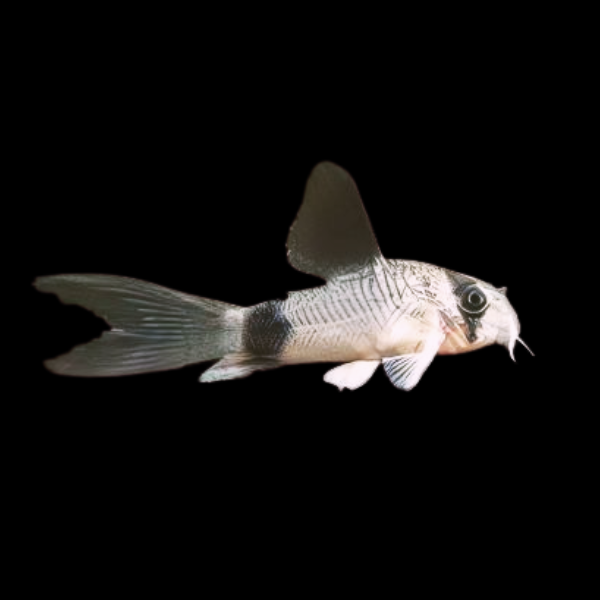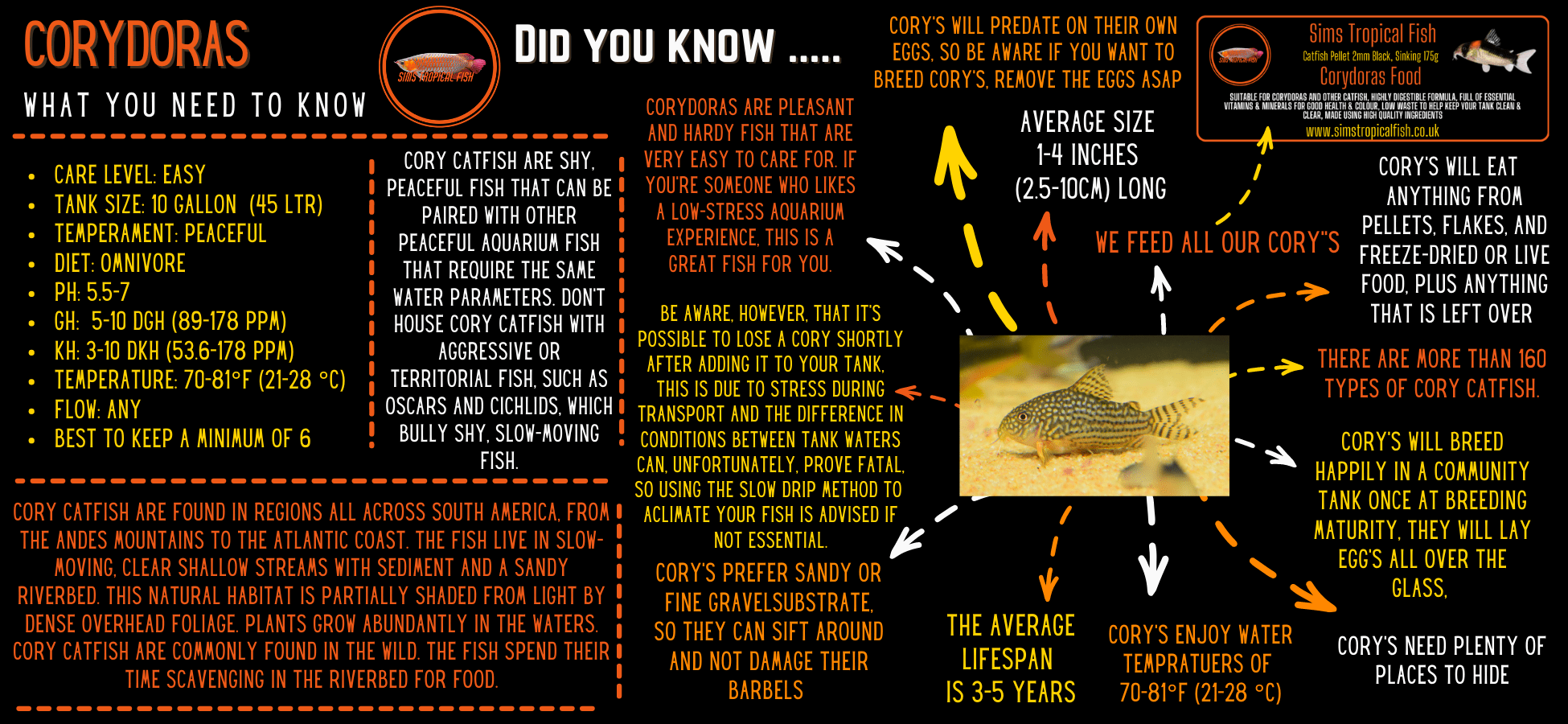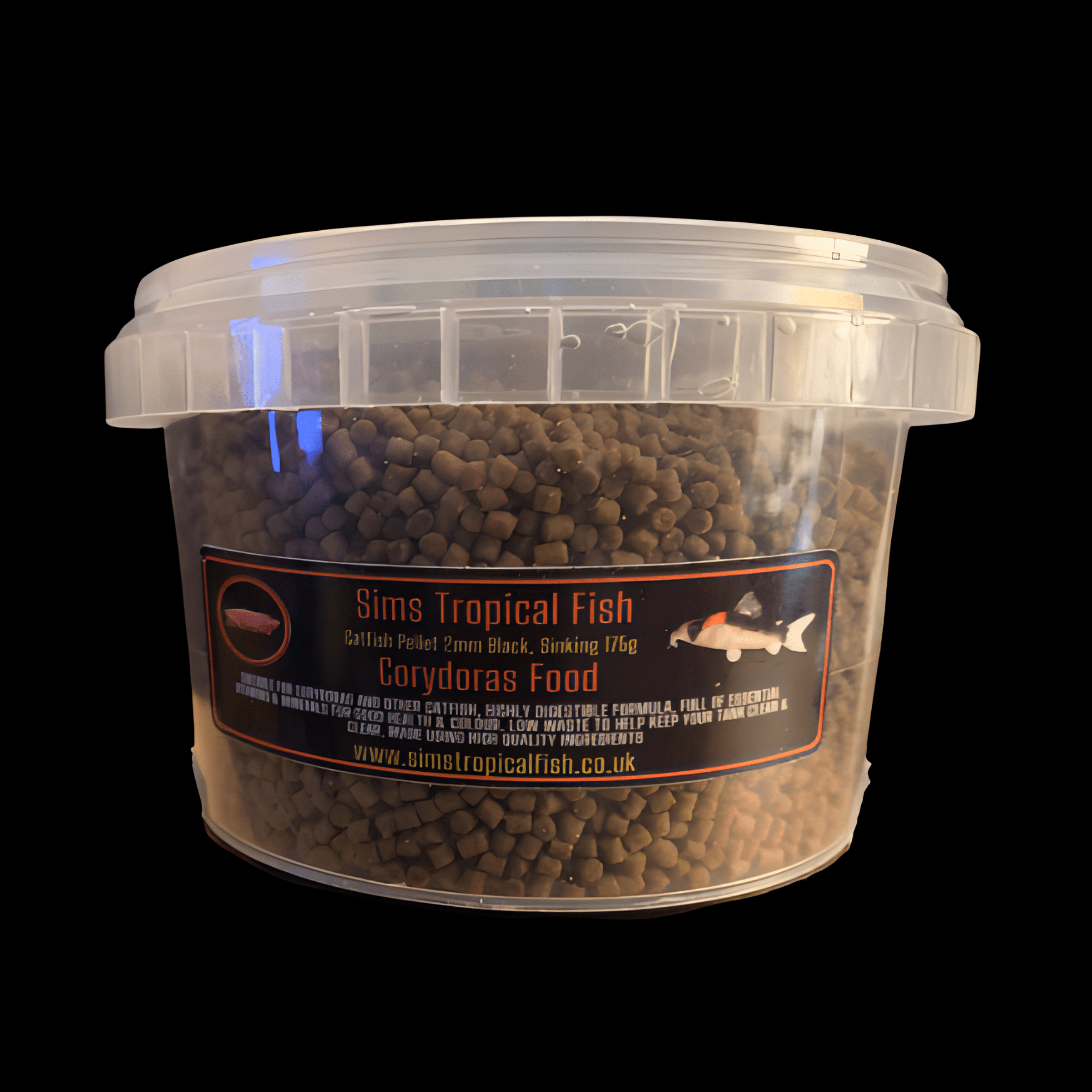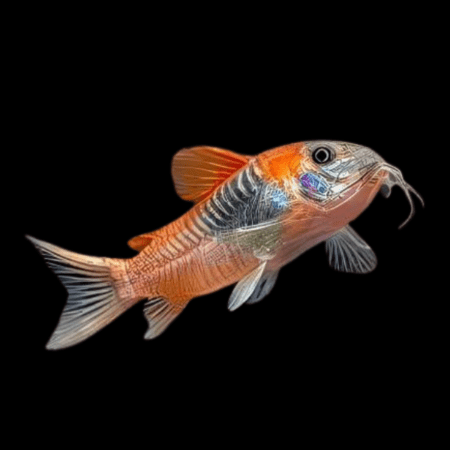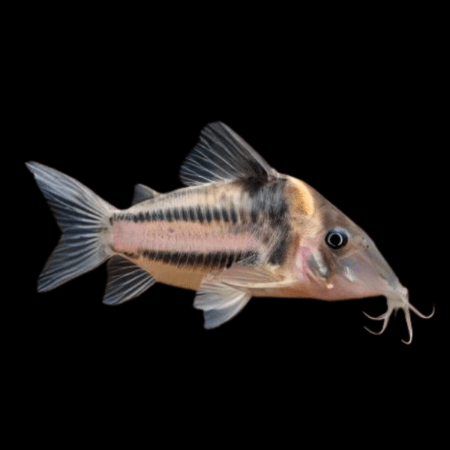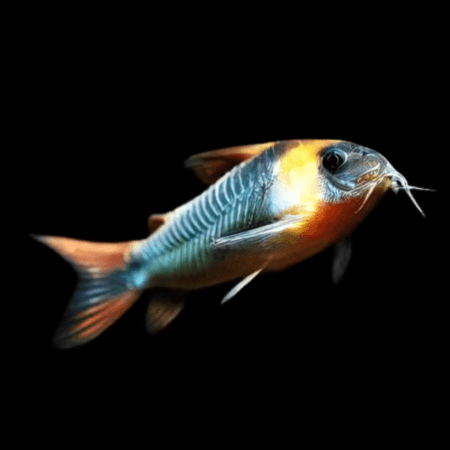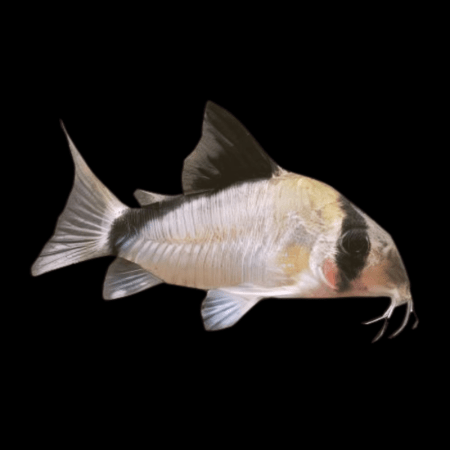Description
Long Fin Panda Corydoras
Scientific Name: Corydoras panda (Long Fin variety)
Common Names: Long Fin Panda Cory, Panda Catfish
Overview
The Long Fin Panda Corydoras is a selectively bred variety of the popular Panda Cory, named for its distinctive black patches over the eyes and near the tail, resembling a panda. This version features elegant, flowing fins, adding extra grace to an already beloved bottom-dweller. Peaceful, social, and full of charm, they’re ideal for community tanks and thrive in groups with other Corydoras or gentle tankmates.
Key Information
Size: 2–2.5 inches (5–6.5 cm)
Lifespan: 5–8 years
Temperament: Peaceful, social, bottom-dweller
Diet: Omnivore – bottom-feeding scavenger
Swimming Level: Bottom
Habitat & Tank Setup
Tank Size: Minimum 15–20 gallons (larger for groups)
Group Size: At least 4–6 for comfort and natural behavior
Substrate: Fine sand preferred (to protect barbels)
Decor: Driftwood, smooth rocks, leaf litter, low plants
Lighting: Low to moderate
Filtration: Gentle flow; sponge filters or quiet canisters work well
Water Parameters
Temperature: 72–78°F (22–26°C)
pH: 6.0–7.5
Hardness: Soft to moderately hard (2–12 dGH)
Water Quality: Very clean, well-oxygenated water is essential
Feeding
Diet Type: Omnivore
Suitable Foods:
Sinking pellets and wafers
Frozen or live foods (bloodworms, daphnia, brine shrimp)
Occasional blanched vegetables (zucchini, spinach)
Feeding Frequency: 1–2 times daily; ensure food reaches bottom
Tankmates
Compatible With:
Peaceful community fish (tetras, rasboras, guppies)
Other Corydoras or small catfish
Shrimp and snails
Avoid:
Aggressive or fast-moving bottom dwellers
Large or territorial cichlids
Care Notes
Sensitive to poor water quality – perform regular water changes
Avoid sharp gravel that can damage their delicate barbels
Active and playful, especially in small groups
Will occasionally swim up for air using their modified gut (common to Corys)
Long fins are delicate – choose calm tankmates to avoid fin-nipping
Fun Fact
Despite being bottom-dwellers, Panda Corydoras often “dart” to the surface to take quick gulps of air—a quirky trait linked to their ability to breathe atmospheric oxygen!
